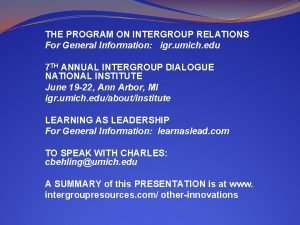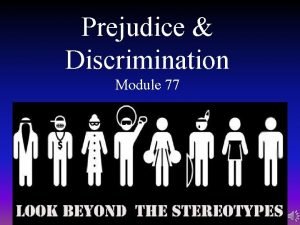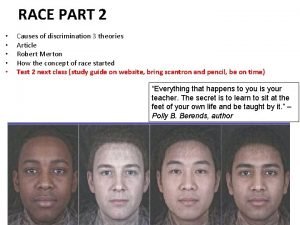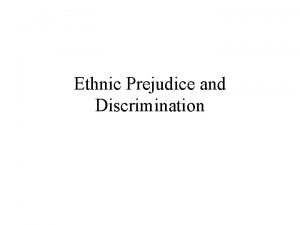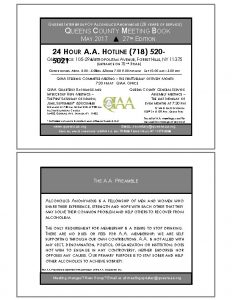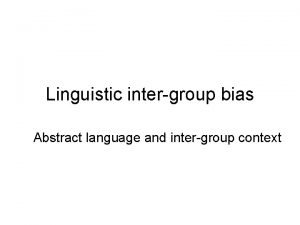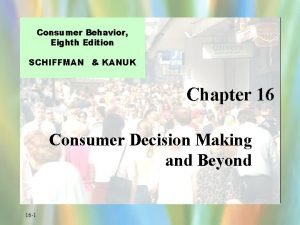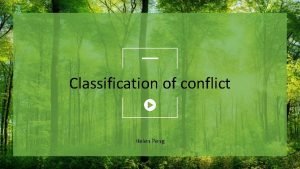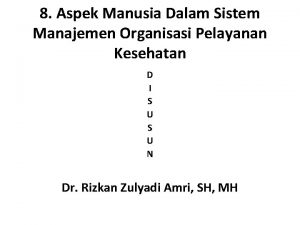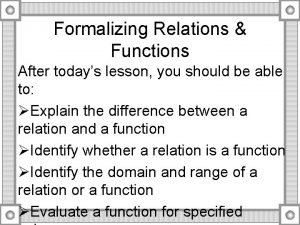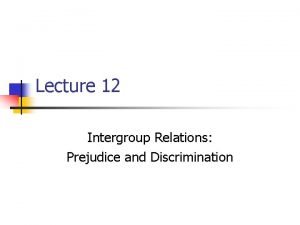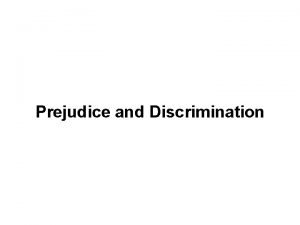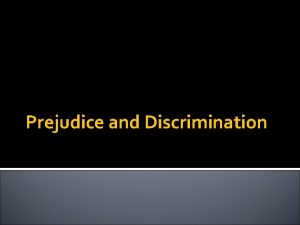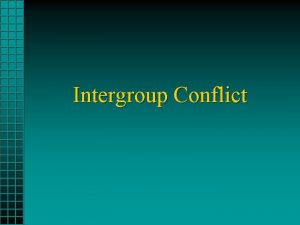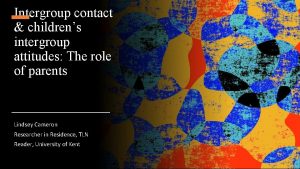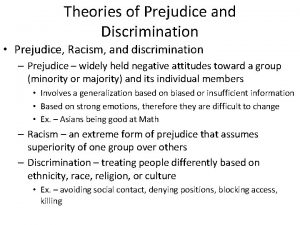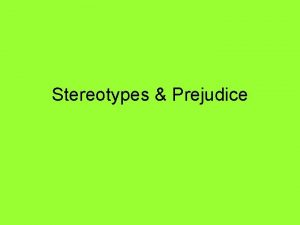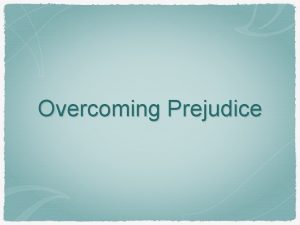PREJUDICE AND DISCRIMINATION Unit 3 INTERGROUP RELATIONS Prejudice












- Slides: 12

PREJUDICE AND DISCRIMINATION Unit 3

INTERGROUP RELATIONS • Prejudice: An attitude towards others based on their membership in a particular group 1. Can be positive or negative

INTERGROUP RELATIONS • Discrimination: When prejudice is expressed in behavior; unequal treatment 1. Legalized discrimination: upheld by law 2. Institutionalized discrimination: outgrowth of structure of society

TABLE TALK • Is it possible for a person to have prejudice attitudes and not discriminate? • Is it possible for a person to discriminate and to not be prejudice?

INTERGROUP RELATIONS • Merton’s Patterns of Prejudice and Discrimination: Individuals can combine discriminatory behavior and prejudicial attitudes in four possible ways……

INTERGROUP PREJUDICE • Stereotypes: mental images in which specific mental, physical and behavioral traits are uncritically attributed to members of a group

INTERGROUP RELATIONS • Development of Racial Prejudice 1. Children are sensitive to differences as early as 4 or 5 2. Values, beliefs, stereotypes, etc. that nourish prejudice are learned in the home and from other major agents of socialization 3. The self-fulfilling prophecy takes place when traits attributed to minority group may be adopted by the minority group

ETHNOCENTRISM A. Tendency to evaluate your own group as superior B. Out-group homogeneity 1. Cognitive process that accentuates differences of those outside an individual’s group and minimize differences within individual’s group 2. Group members assumed to have more similar attitudes than they really do

wusses

REDUCING PREJUDICE AND DISCRIMINATION • Historically 1. 1954, hope was integration would reduce prejudice and discrimination 2. In many cases, integration heightened the problem

REDUCING PREJUDICE AND DISCRIMINATION • Successful integration requires: 1. Firm endorsement by those in authority 2. Absence of competition among members of different racial groups 3. Equal status of groups 4. Contact that would permit learning about each other

TABLE TALK • With your table, discuss what is the difference between prejudice and discrimination. • How have your attitudes of prejudice changed?
 Umich igr
Umich igr Usually negative, _____ is an attitude or prejudgment.
Usually negative, _____ is an attitude or prejudgment. Gordon allport's scale of prejudice and discrimination
Gordon allport's scale of prejudice and discrimination Merton's typology of prejudice and discrimination
Merton's typology of prejudice and discrimination Langkah teks eksplanasi
Langkah teks eksplanasi Intergroup dialogue training
Intergroup dialogue training Queens aa
Queens aa Linguistic intergroup bias definition
Linguistic intergroup bias definition Intergroup gifting
Intergroup gifting Intergroup vs intragroup
Intergroup vs intragroup Intergroup activities
Intergroup activities Employee relations in public relations
Employee relations in public relations Lesson 4-6 formalizing relations and functions answers
Lesson 4-6 formalizing relations and functions answers
